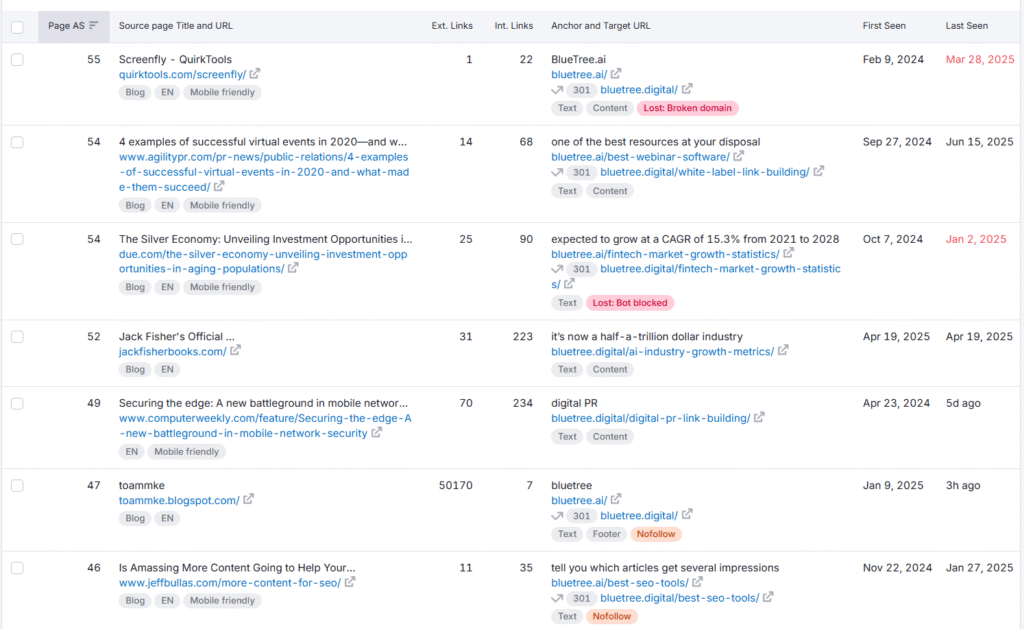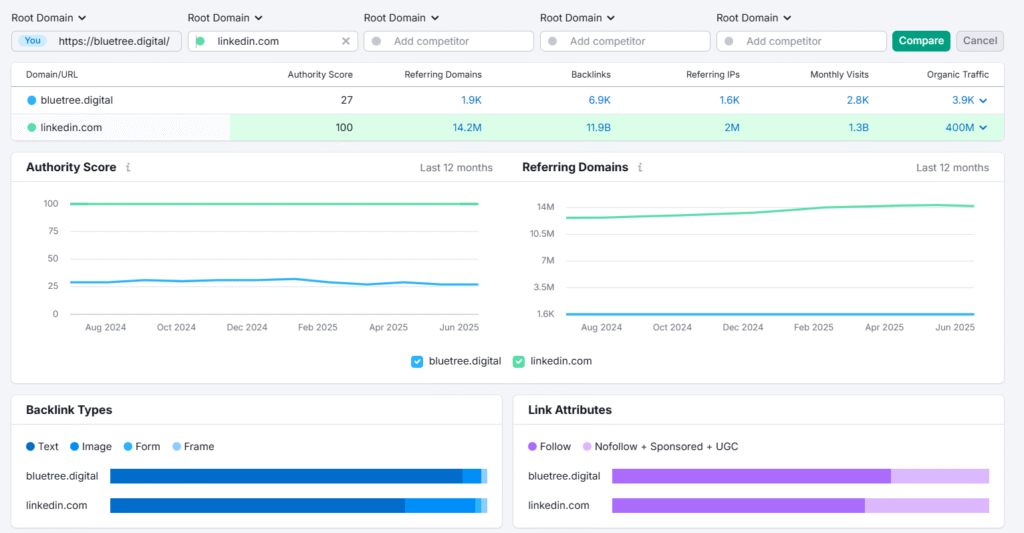Has your website’s traffic taken a hit recently? You’re not alone. Countless site owners experience a sudden dip in organic traffic—even after months or years of effort.
One of the most overlooked reasons for SEO decline is a weakened or outdated backlink profile. The good news? You can turn things around. This guide shares 7 powerful, practical ways to find more backlinks to your website and recover from traffic loss.
Whether you run an eCommerce store, a SaaS platform, or a service-based site, these proven strategies will help rebuild authority, drive referral traffic, and regain rankings.
Why Backlinks Still Matter in the Age of AI and EEAT
Google’s Changing Algorithm Doesn’t Mean Backlinks Are Dead
Google’s Helpful Content Update, AI Overviews (AEo), and EEAT guidelines prioritize helpful, people-first content. But links are still a key part of how Google evaluates authority and trust.
In fact, according to a Semrush study, backlinks remain one of the top three ranking factors in 2025.
Backlinks Are a Trust Signal in Google’s EEAT Framework
Backlinks tell search engines that your content is cited, trusted, and referenced by other authoritative sites. Fewer backlinks = lower perceived authority.
When your link profile weakens, your rankings—and traffic—follow suit.
Audit and Reclaim Lost or Broken Backlinks

Use Tools to Identify Lost Backlinks
Use tools like Ahrefs, SEMrush, or Google Search Console to spot broken links pointing to your pages. Look under “Lost Backlinks” or “404 errors” reports.
Reach Out to Reclaim High-Value Links
If a high-authority site used to link to you but no longer does, send a polite outreach email with the correct URL or a new resource to link to.
Use 301 Redirects Where Appropriate
If you’ve moved content or deleted old URLs, set up 301 redirects to pass link equity to new versions.
Example: You had an old blog post that was ranking and linked from 10 websites. That URL is now gone. Recreate it or redirect it to a related page.
Analyze Competitor To Find More Backlinks for New Opportunities

Use the Link Intersect Technique
Find domains that link to your competitors—but not to you. Tools like Ahrefs and Moz make this easy with the “Link Intersect” tool.
Spot Patterns in Competitor Backlink Profiles
Look for:
Types of content getting links (e.g., tools, guides, comparisons)
Websites or blogs that often link to your niche
Guest post opportunities
Example:
Your competitor has 50 links from design blogs. That’s your next
target category.
Use Google Search Operators to Find Backlink Sources
Advanced Search Strings to Try
Use queries like:
"keyword" + inurl:resources"your topic" + intitle:linkssite:.edu "your keyword"
Qualify Link Prospects Quickly
Check:
Domain authority
Relevance to your niche
Linking behavior (spammy or natural?)
Tip:
Start with high-trust pages like resource lists and industry roundups.
Create Linkable Assets That Naturally Attract Backlinks
What Is a Linkable Asset?
A linkable asset is any content that’s valuable enough for others to reference. Examples include:
Original research
Interactive tools
Ultimate guides
Free templates
Promote Your Asset Proactively
Once your content is ready, promote it:
Through outreach (email, LinkedIn)
On Reddit, Quora, and niche forums
With press releases or HARO pitches
Example:
A free ROI calculator for online store owners earns backlinks from
blogs discussing eCommerce optimization.
Leverage Free Backlink Tools for Quick Wins
Use Tools to Discover Your Existing Link Profile
Tools like:
These help you:
See who’s linking to you
Monitor new or lost links
Find anchor text diversity
Benchmark Against Competitors
Use free reports to compare your domain’s authority, number of referring domains, and top linked pages.
Tap Into Directories, Forums, and Local Citations
Build Links from Business and Niche Directories
Find reputable platforms in your region or industry:
Clutch
Yelp
Capterra
Crunchbase
Post on High-Quality Niche Forums
Get involved in communities like:
Reddit (niche subreddits)
Stack Exchange
Shopify or WooCommerce forums
GEO Optimization for Local SEO
Add citations in:
Local chamber directories
Business listing sites (e.g., UAE’s connect.ae, Dubai Yellow Pages)
Use Personalized Outreach to Earn Authoritative Backlinks
Focus on Relationship Building
Outreach works best when it’s personalized. Mention something specific from the prospect’s content and explain why linking to your asset helps their readers.
Include a Clear Value Proposition
Don’t just ask for a link. Offer:
A better resource
Updated data
A new angle on the topic
Example Email Snippet:
"Hi [Name], I loved your post on [Topic]. I created a new
data-backed resource on the same topic—would love to get
your feedback on it. If you find it useful, feel free to
link to it."
Bonus: Monitor and Maintain Your Backlink Profile
Set Up Alerts for Link Changes
Use tools like:
Ahrefs Alerts
SEMrush Backlink Tracker
- Google Alerts (for brand mentions)
Disavow Spammy Links
If you find irrelevant, spammy backlinks pointing to your site, use Google’s Disavow Tool to protect your rankings.
Conclusion
Backlinks aren’t just about SEO—they’re about credibility. If your site has suffered a traffic drop, these 7 proven tactics will help you rebuild trust, boost authority, and earn high-quality links.
Don’t wait for links to come to you. Start small, stay consistent, and watch your visibility grow.
Try implementing one strategy this week—and track your progress.
FAQs
Use tools like Google Search Console, Ubersuggest, or Seobility to check your backlinks without paying.
Ahrefs and SEMrush are industry favorites for deep competitor analysis.
There’s no exact number. Focus on quality, relevance, and natural growth over quantity.
Yes—using advanced search operators like "keyword" inurl:resources to find linking pages.
Avoid paid links, irrelevant directories, PBNs (Private Blog Networks), and comment spam.